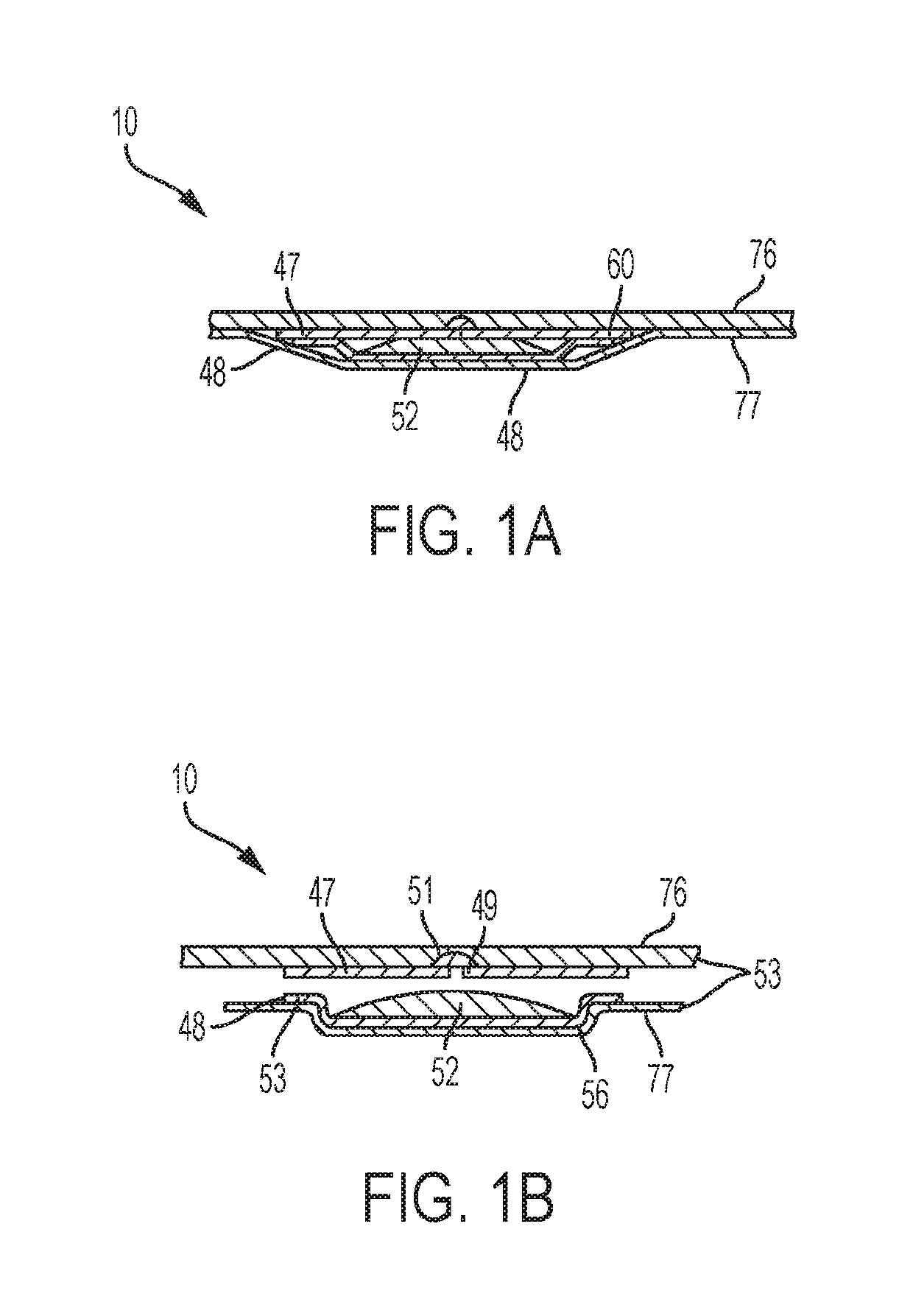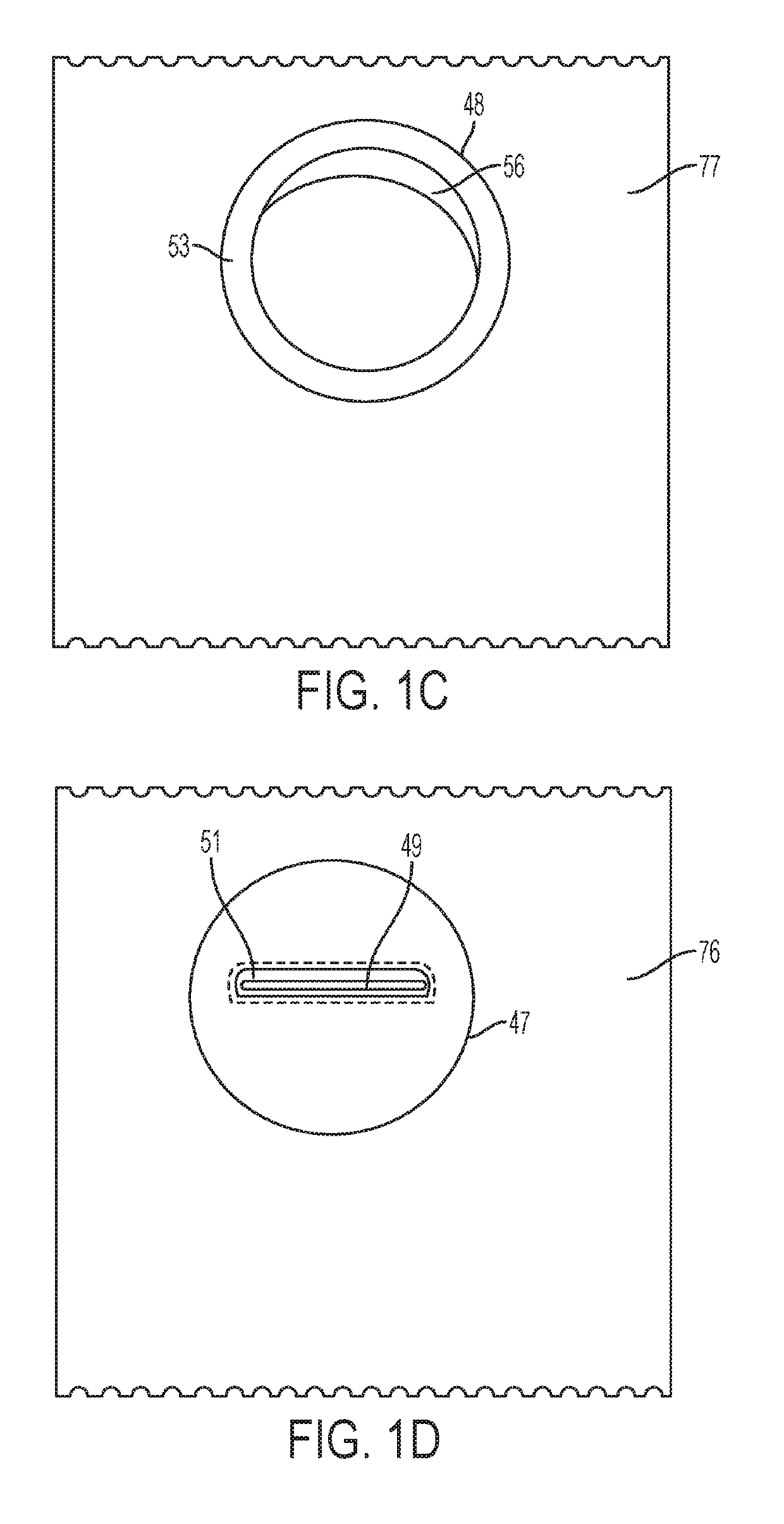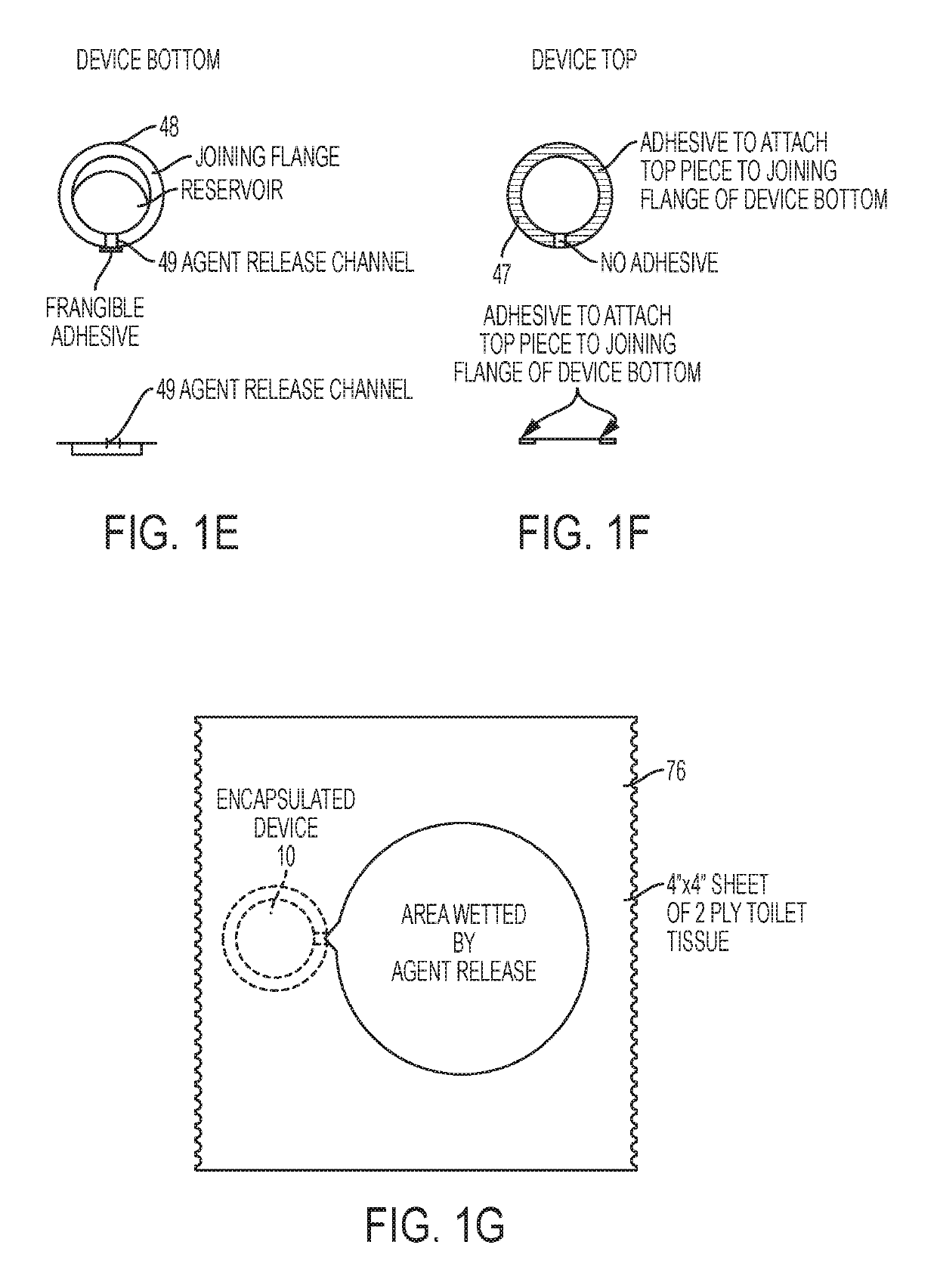Method to manufacture substrate with latent wetting device
a technology of latent wetting and substrate, which is applied in the direction of patterned paper, packing paper, other domestic articles, etc., can solve the problems of not being able to fit the existing dry toilet paper dispenser, not being able to store conveniently, and high price of wet wipes, so as to reduce harmful bacteria, convenient to purchase, and convenient to store
- Summary
- Abstract
- Description
- Claims
- Application Information
AI Technical Summary
Benefits of technology
Problems solved by technology
Method used
Image
Examples
Embodiment Construction
[0055]In the following embodiments described, a flat, thin, pliable device is disclosed. The device is comprised of two parts which are attached to the inside of plied paper. The bottom part is formed into a container with sides and a flange, and the top part is formed into a cover with an opening slit. The bottom container is filled with an active agent, and a sealing adhesive is applied to the top of the bottom flange or around the periphery of the bottom of the cover, or both. A frangible adhesive is applied on top of the opening slit in the cover. The bottom paper ply and top paper ply are brought together with a machine which presses only the flange and the periphery of the cover together, sealing the agent water-tight within the container.
[0056]A liquid agent holding and dispersing device 10 in accord with one aspect of the application is shown in FIGS. 1A-1D. The device 10 is configured to be opened to release the liquid agent using a user's hand. As shown in FIGS. 1A-1D, the...
PUM
| Property | Measurement | Unit |
|---|---|---|
| volume | aaaaa | aaaaa |
| size | aaaaa | aaaaa |
| size | aaaaa | aaaaa |
Abstract
Description
Claims
Application Information
 Login to View More
Login to View More - R&D
- Intellectual Property
- Life Sciences
- Materials
- Tech Scout
- Unparalleled Data Quality
- Higher Quality Content
- 60% Fewer Hallucinations
Browse by: Latest US Patents, China's latest patents, Technical Efficacy Thesaurus, Application Domain, Technology Topic, Popular Technical Reports.
© 2025 PatSnap. All rights reserved.Legal|Privacy policy|Modern Slavery Act Transparency Statement|Sitemap|About US| Contact US: help@patsnap.com



